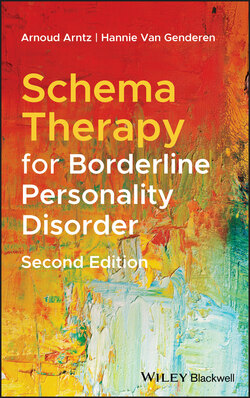Читать книгу Schema Therapy for Borderline Personality Disorder - Hannie van Genderen - Страница 36
Structure of Treatment
ОглавлениеTreatment begins with a comprehensive inventory of the problems as the patient experiences them. This is done in connection with a thorough explanation of the schema mode model. Also included in these beginning sessions is a discussion of practical matters such as the frequency of sessions (once or twice a week) and the expected duration of the therapy (one‐and‐a‐half years or longer if necessary).
If the patient is not able to stay in therapy for such a long period for practical reasons (for instant she is going to move to another city far away) or doesn't want to participate in such a long therapy, it is advisable not to start with the therapy and refer the patient to another kind of treatment. The same applies to the therapist. If he is unable to work with the patient for a longer period, he should not start a ST with a patient with a BPD. If he stops therapy in the middle of the treatment, there is a big risk that the patient will feel abandoned and betrayed again and can have a serious relapse. When the therapist has to end therapy too early unexpectedly, it is very important that he takes enough time to discuss this with his patient and endures all the reactions of the patient without defending himself. He has to keep in mind that extreme reactions come from the modes and not from the healthy adult. So, he tries to adapt his reaction to the mode that comes to the fore. Of course, the therapist also does his utmost best to find another schema therapist and takes care of a good transfer, for instant by having at least one or two joint sessions.
Another issue that has to be agreed upon is that the patient is willing to tell something about her past and her upbringing. If she refuses this completely it is better to refer her to a therapy that is more oriented at the present. This does not mean that you should not start with a patient who says that she has very few or no memories from her youth. There are several possibilities to help the patient to find relevant memories later in therapy (see Chapter 5).
The recording of therapeutic sessions is recommended. Most patients have a smartphone and use this for recording the session. The patient is asked to listen to it before the next session takes place. Listening to the recorded sessions strengthens the effect of the therapy. No one is capable of incorporating all the information involved in a single session. Therefore, it is a very beneficial tool for the patient to listen to the recorded session. Often it is only upon listening to the recording that a patient actually hears and comprehends what was said during the session. During the actual session the patient could be in a mode that is not conducive to listening or processing information. Modes can distort how tone and language are perceived and therefore strongly influence information processing. Because of this, listening or re‐listening, to recorded sessions not only reiterates the session itself, it also serves as proof of what was actually said and done during the session. However, the therapist does not try to force the patient to listen to the recordings, if the patient refuses. It is recommended that the reasons are explored and understood from the patient's mode model (which mode underlies the refusal?), and that priority is given to issues that are more important when it comes to change.
